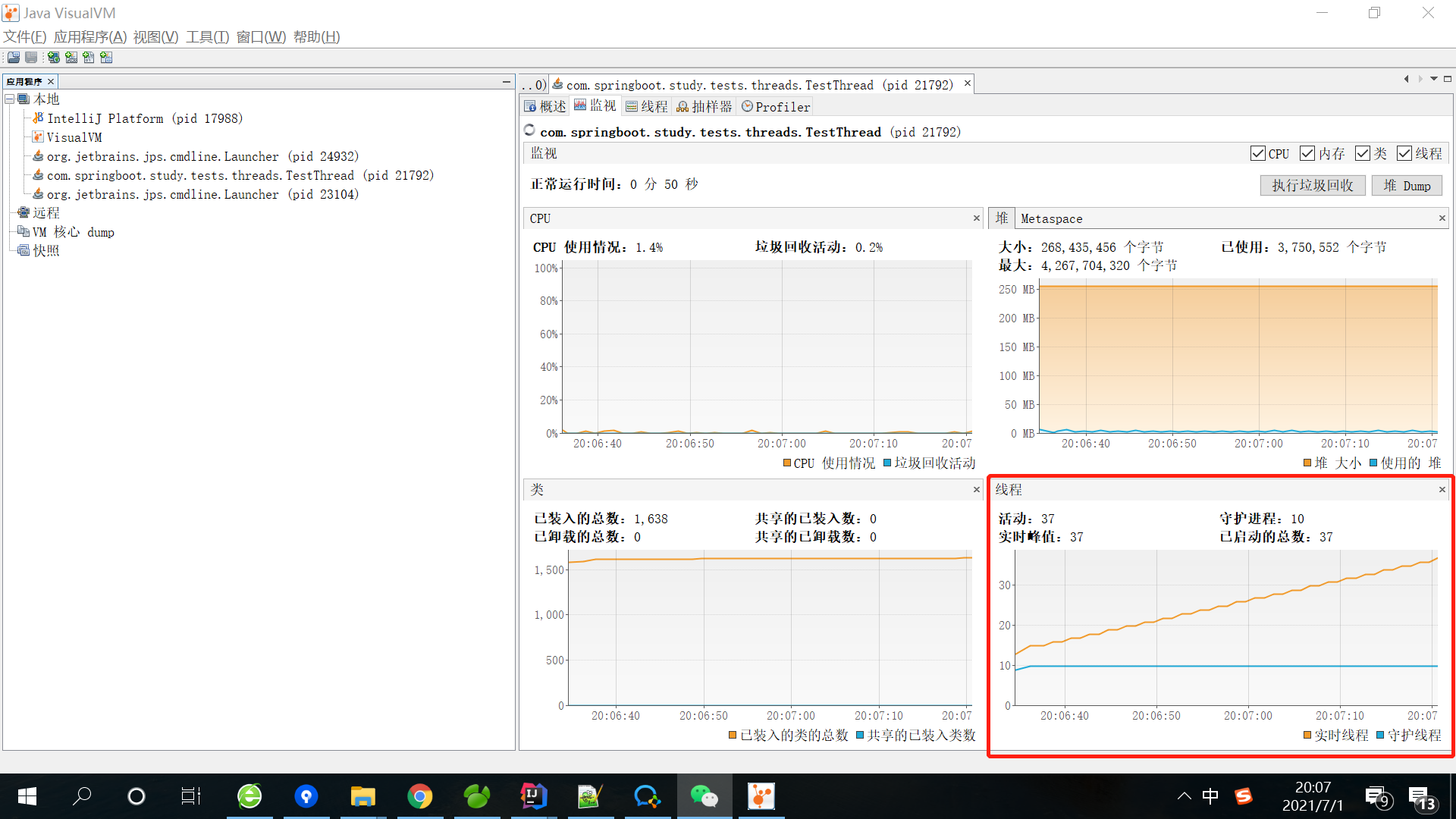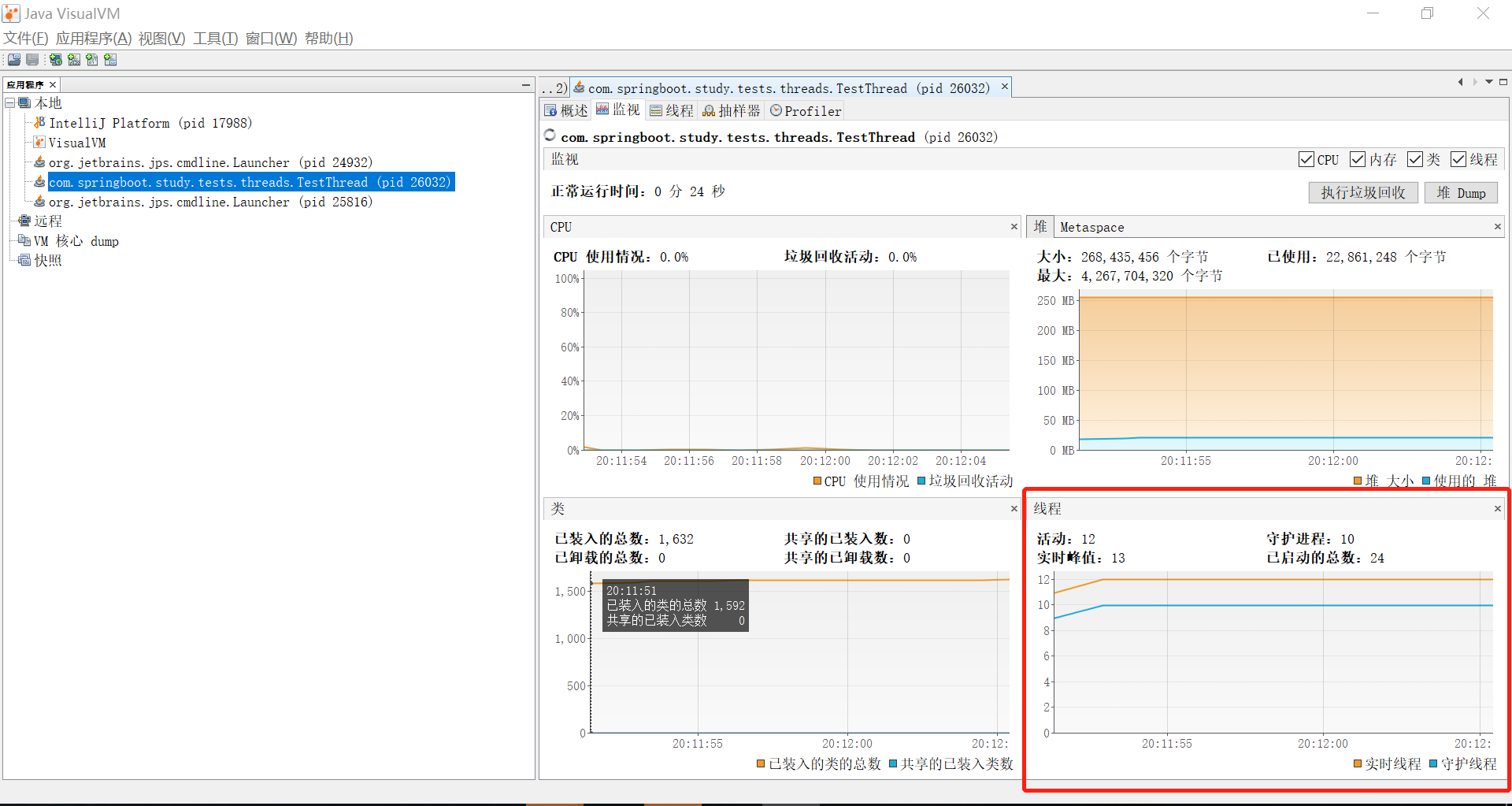线程池可以把线程复用起来,减少线程创建销毁的时间和资源消耗,提高了程序任务执行的吞吐率。就像线程属于全局使用的资源一样,线程池一般也是全局性,对整个应用进程的线程复用做有效的管理。设计者一般都会把线程池作为类的静态成员或者单例成员,存活于整个进程的生命周期。
但是还是例外地看到了类似这样的代码,比如放到了方法体中作为局部变量:
private static void sampleFunc() { ExecutorService executor = Executors.newFixedThreadPool(10); for (int i = 0; i < 100; i++) { executor.execute(new Runnable() { @Override public void run() { ... } }); } }
这些线程池的使用看起来挺正常的,隐藏着一个很严重的问题:
当对象实例不再使用或者方法执行完毕后,什么时候会释放线程 ,关闭线程池?
不同的线程池表现不一样。主要看是否设置了核心线程数。
- 如果没有设置核心线程数,比如 newCachedThreadPool ,在线程池的线程空闲时间到达 60s 后,线程会关闭,所有线程关闭后线程池也相应关闭回收。
- 如果设置了核心线程数,比如 newSingleThreadExecutor 和 newFixedThreadPool ,如果没有主动去关闭,或者设置核心线程的超时时间,核心线程会一直存在不会被关闭,这个线程池就不会被释放回收。
验证如下:
public static void main(String[] args) { while (true) { try { ExecutorService service = Executors.newFixedThreadPool(1); service.submit(new Runnable() { @Override public void run() { try { Thread.sleep(2000); ////模拟处理业务 } catch (InterruptedException e) { } } }); service = null; } catch (Exception e) { } try { Thread.sleep(2000); System.gc(); } catch (InterruptedException e) { } } }
运行后,查看jvm,会发现线程每2秒就增长一个。如下图所示:

加了shutdown代码后:
public static void main(String[] args) { while (true) { ExecutorService service = Executors.newFixedThreadPool(1); try { service.submit(new Runnable() { @Override public void run() { try { Thread.sleep(2000); } catch (InterruptedException e) { } } }); } catch (Exception e) { }finally{ service.shutdown(); } try { Thread.sleep(2000); } catch (InterruptedException e) { } } }
就一直很平稳,运行结果如下图所示:

剖析
为什么会有这样的现象?线程池无法被回收,是因为线程池的引用被它的内部类 Worker 持有了。而 Worker 和线程一一对应,是对 Thread 的增强,所以本质上就是因为线程没有被释放。那么任务队列已经空了,并且外界也没有任务过来,线程为什么还没有被释放?看 ThreadPoolExecutor 的 runWorker方法:
final void runWorker(Worker w) { Thread wt = Thread.currentThread(); Runnable task = w.firstTask; w.firstTask = null; w.unlock(); // allow interrupts boolean completedAbruptly = true; try { while (task != null || (task = getTask()) != null) { w.lock(); // If pool is stopping, ensure thread is interrupted; // if not, ensure thread is not interrupted. This // requires a recheck in second case to deal with // shutdownNow race while clearing interrupt if ((runStateAtLeast(ctl.get(), STOP) || (Thread.interrupted() && runStateAtLeast(ctl.get(), STOP))) && !wt.isInterrupted()) wt.interrupt(); try { beforeExecute(wt, task); Throwable thrown = null; try { task.run(); } catch (RuntimeException x) { thrown = x; throw x; } catch (Error x) { thrown = x; throw x; } catch (Throwable x) { thrown = x; throw new Error(x); } finally { afterExecute(task, thrown); } } finally { task = null; w.completedTasks++; w.unlock(); } } completedAbruptly = false; } finally { processWorkerExit(w, completedAbruptly); } }
我们看到要执行线程退出 processWorkerExit 需要这几种情况:
- 线程池的状态 >= STOP
- getTask 获取到空任务
第一个条件,线程池的状态要达到 STOP,需要调用 shutdown 或者 shutdownNow 方法,我们不满足。
第二个条件,getTask 获取到空任务,继续看 getTask 的代码:
private Runnable getTask() { boolean timedOut = false; // Did the last poll() time out? for (;;) { int c = ctl.get(); int rs = runStateOf(c); // Check if queue empty only if necessary. if (rs >= SHUTDOWN && (rs >= STOP || workQueue.isEmpty())) { decrementWorkerCount(); return null; } int wc = workerCountOf(c); // Are workers subject to culling? boolean timed = allowCoreThreadTimeOut || wc > corePoolSize; if ((wc > maximumPoolSize || (timed && timedOut)) && (wc > 1 || workQueue.isEmpty())) { if (compareAndDecrementWorkerCount(c)) return null; continue; } try { Runnable r = timed ? workQueue.poll(keepAliveTime, TimeUnit.NANOSECONDS) : workQueue.take(); if (r != null) return r; timedOut = true; } catch (InterruptedException retry) { timedOut = false; } } }
任务队列使用的是阻塞队列 BlockingQueue,该队列提供了两种方法来获取任务:
- poll,可以设置超时时间,当超时后会得到一个空任务。
- take,阻塞住,直到有任务出现。
从上面的 getTask 方法中我们可以看到:
- 当前线程数大于核心线程,会调用 poll,超时后返回空任务。
- 当前线程数小于等于核心线程,并且调用了 allowCoreThreadTimeOut 方法允许核心线程超时关闭的情况下,也是调用 poll,超时后返回空任务。
- 其他情况,调用 take 阻塞等待。
我们上面使用单个核心线程的线程池,在没有任务的情况下,核心线程正处于 getTask ,调用阻塞队列 BlockingQueue 的 take 方法阻塞等待获取到任务,从而导致线程池包括里面的核心线程迟迟不被关闭并且回收。
小结
像上面那样去设置线程池,可以理解为线程池的局部应用。
不推荐用这样的方式,因为局部线程池能做到的事情,全局线程池也可以做到。而且全局单例的线程池还可以不用考虑关闭线程池的问题,毕竟生命周期和进程一致。
如果业务场景非要这样用的话,并且线程池有核心线程的情况下,要注意做两件事情防止对象泄漏:
- 对核心线程设置超时时间。
- 主动调用 shutdown 或 shutdownNow 来关闭线程池。
参考博客:
https://cloud.tencent.com/developer/article/1497832
https://blog.csdn.net/Qgwperfect/article/details/82849228